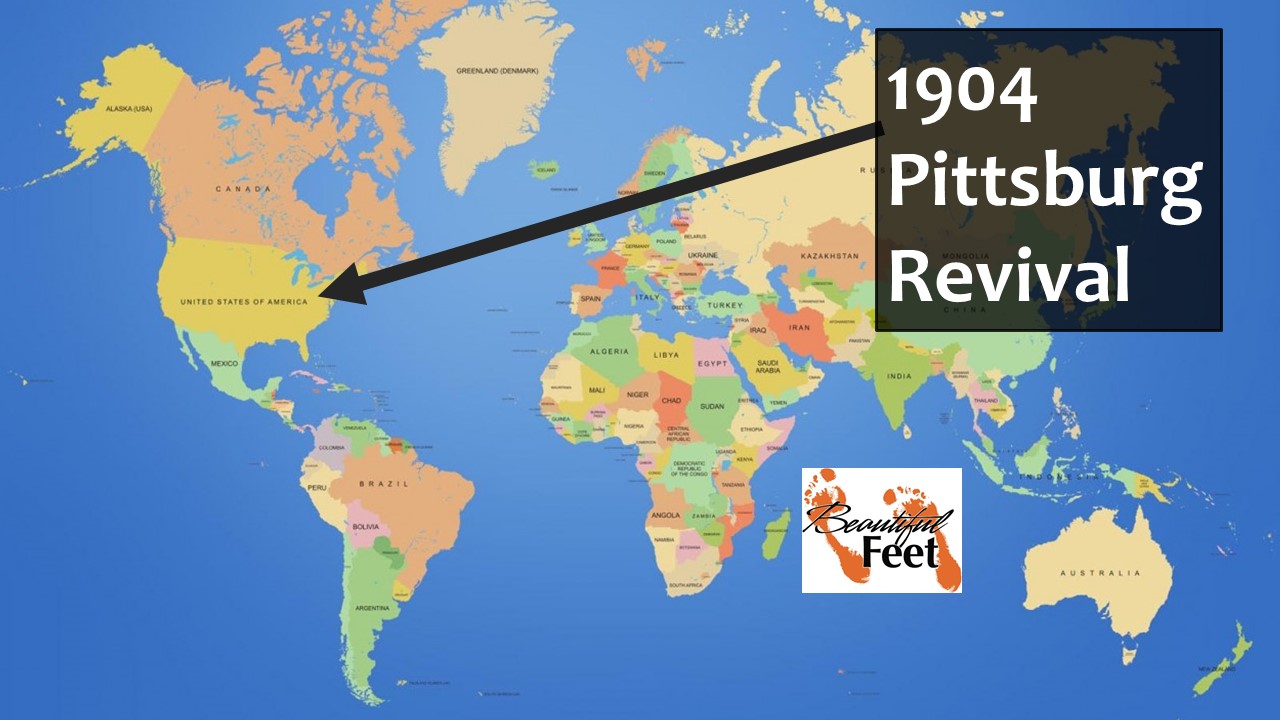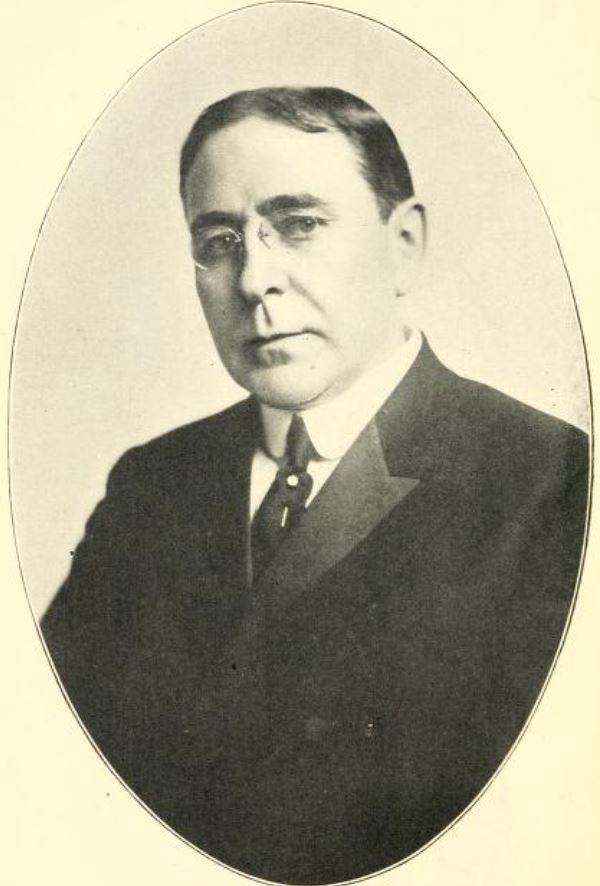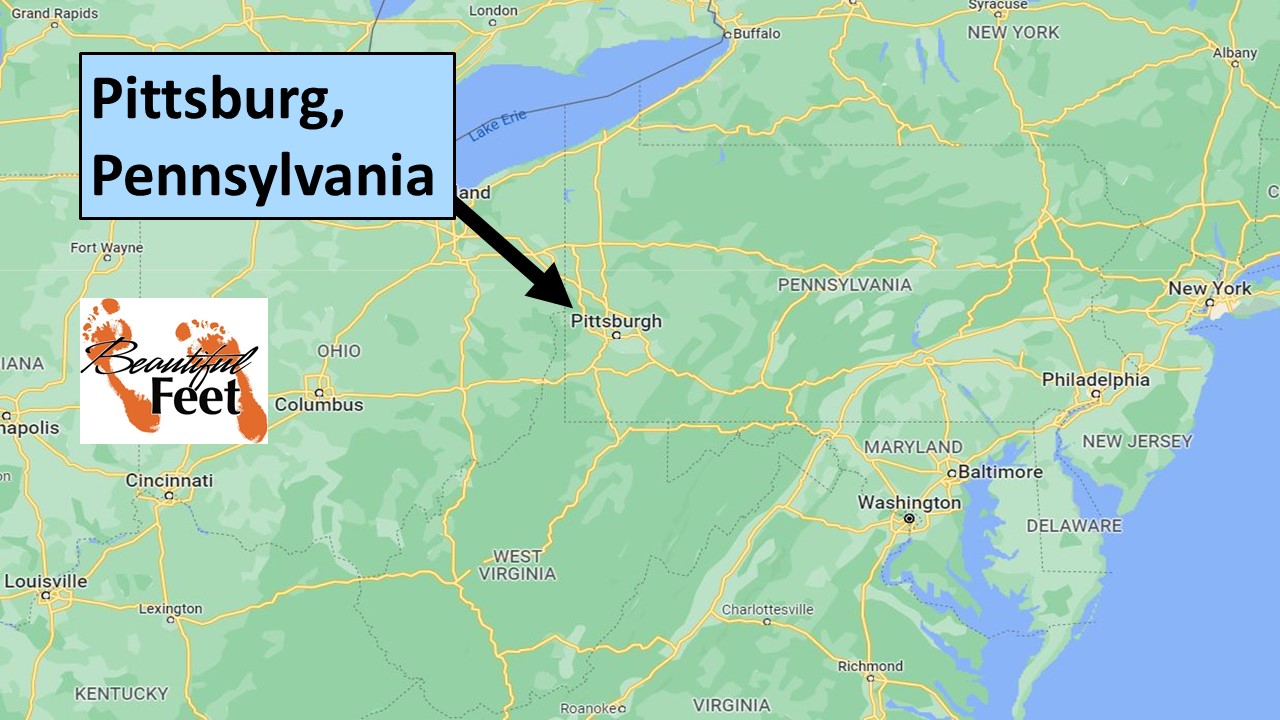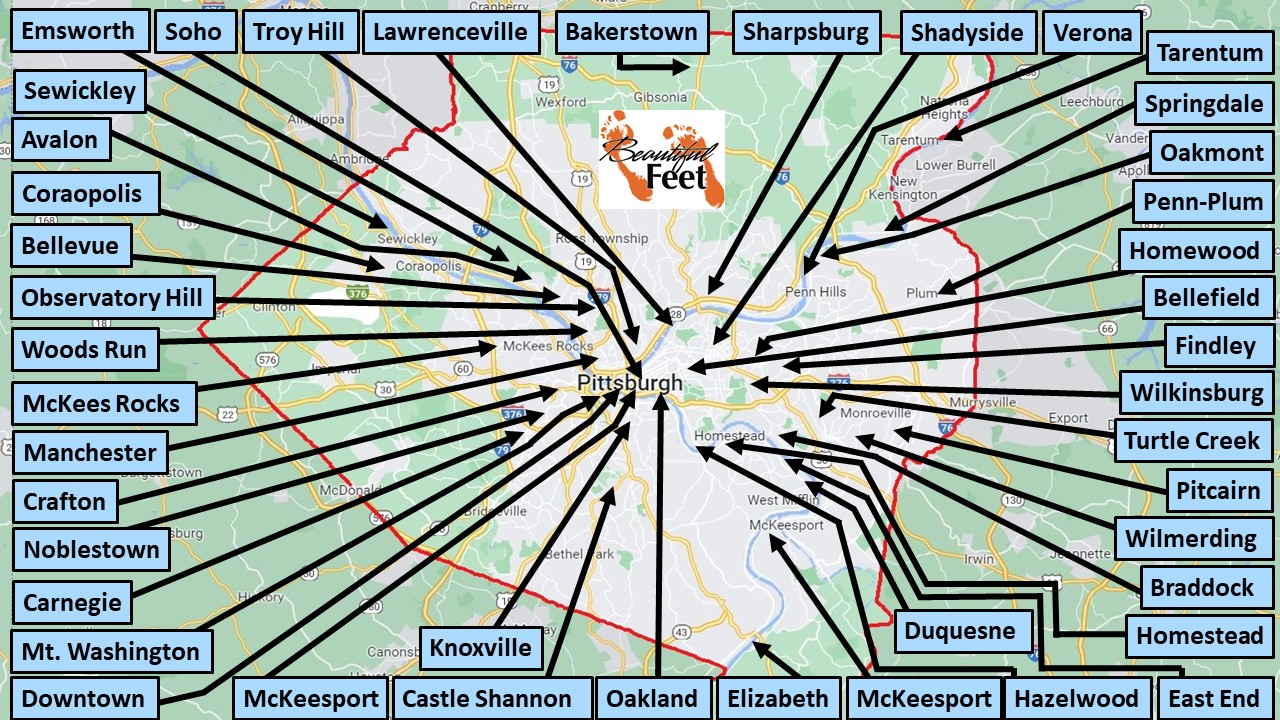1904 Pittsburg Revival


In an attempt to standardize place names, the United States Board of Geographic Names changed the spelling of “Pittsburgh” to “Pittsburg” in 1891, but it was changed back in 1911 due to staunch resistance in the community.
Introduction
This article is about a well-planned, orchestrated, and successful evangelistic effort that occurred in the early months of 1904, in Allegheny County, Pennsylvania. The main city in that county was Pittsburg. The effort followed a evangelistic process used by R. A. Torrey, who was a close associate of D. L. Moody (the Billy Graham of the 1800s).
In October 1903, Torrey’s success in Melbourne, Australia, using an evangelistic pattern referred to as a “Simultaneous Evangelistic Mission,” was reported to the ministers of Allegheny County. Torrey’s results impressed them so much that they decided to do the same, and they invited one’s of Torrey’s previous partners, J. W. Chapman, to come and direct their “Simultaneous Evangelistic Mission” during February the following year.
Defining the Word Revival
Through the last two centuries there has been endless debate over the word revival. Some believe the word should be reserved exclusively for the general reviving of The Church. This is when a congregation has slipped into a cold, lukewarm, or indifferent relationship with God, and at the same time allowed concern for His mission in the world to become extinguished.
When the individual believer or The Church at large becomes complacent and apathetic, and even wanders from Biblical truth, a revival is needed to set things back into proper place. This is the technically accurate usage of the word revival, because for something to be re-vived, it must first have been alive.
The evangelistic ministry that occurred in Pittsburg in 1904 took the term revival and applied it to an evangelistic effort which had the focus on the unconverted, and not on the reviving of an individual Christian, a given congregation, or The Church at large. Though the word revival is often attached to evangelistic efforts, other names have also been used to describe these mass evangelistic efforts, like “Evangelistic Campaign” or “Evangelistic Crusade.”
To distinguish between the two focuses of ministry–one toward the re-viving of Christians, and one toward evangelization of the unconverted–some thought it necessary to use a different word to describe the mass evangelistic effort, and that word is revivalism.

Rev. J. W. Chapman worked with D.L. Moody prior to
launching out on his own. Chapman directed
the Pittsburg “Simultaneous Evangelistic Mission,”
and did the same in many cities throughout the USA.
Revivalism
Beginning with Charles G. Finney in the early 1800s, till now, mass evangelistic efforts have been developed and expanded on. There was a succession of very prominent evangelists over the years and they all drew from the experiences of the ones preceding them, often by having worked directly with their predecessor, or being highly influenced by them:
► Charles G. Finney (1792-1875)
► Dwight L. Moody (1837-1899)
► R. A. Torrey (1856-1928)
► John W. Chapman (1859-1918)
► Billy Sunday (1862–1935)
► Billy Graham (1918-2018)
In this account we will focus on the 1904 Pittsburg Revival and look at how revivalism was used to share the Gospel with the lost, but at the same time it inadvertently worked toward the re-viving of the individual Christians and The Church throughout Pittsburg.

Spiritual Conditions in Pittsburg
The clergy throughout Pittsburg knew the spiritual conditions of their churches were languishing. Though efforts were made to pull themselves out of the slump, nothing seemed to work.
A financial boom hit Pittsburg in 1901-1903, which enabled churches to pay off debts, build new churches, and increase pastors’ salaries, yet the increase in finances made no effect on the real life of the churches.
► Sunday morning attendance was decreasing, with Sunday nights more so.
► Places of leisure and recreation took people out of churches on Sundays, and took their children out of the Sunday Schools.
Satan’s places of allurements were named:
► Ball games
► Dance halls
► Saloons
► Gambling dens
► Brothels
Ministerial Union of Pittsburg
Around 1901 there was unity formed among many of the churches of Pittsburg, but the purpose was not to engage in evangelistic work–it was to address social work and Christian fellowship.
During the Pittsburg ministerial meeting on October 12, 1903, two men shared about the revival that occurred in Melbourne, Australia, under the ministry of R. A. Torrey.
The report stated that the churches of Melbourne united and:
► 214 churches began praying.
► 117,000 people attended 16,800 home prayer meetings prior to the start of the planned meetings.
► 700 people formed committees to organize an evangelistic campaign.
► 2,000 personal workers were trained (alter workers/counselors to assist and follow up on those who would respond to a Gospel message during meetings).
► 2,500 choir members were recruited.
► 50 evangelists and ministers were invited to do the preaching, with many different locations conducting meetings all at the same time (Simultaneous Evangelistic Mission).
► No churches were to be used as locations for the preaching. Instead they used tents, town halls, and public halls.
During the 4-week Melbourne campaign, conducted at 50 different locations, 8,642 names were collected of those who had been converted.

Opening paragraph from a March 8, 1902, article in the Australian newspaper, Brighton Southern Cross. (Read the entire article here.) The article tells of the “Simultaneous Evangelistic Mission”
that was held in Melbourne and the surrounding suburbs,
directed by R. A. Torrey.
The Pittsburg Resolve
After hearing the report of what God did in Melbourne, Australia, the Pittsburg ministers immediately set out to organize a Simultaneous Evangelistic Movement along the lines of what occurred in Melbourne.
By the end of 1903 the Pittsburg Ministerial Union had a committee with a plan in place for an early 1904 “Simultaneous Evangelistic Movement.”
► A general committee was made up of 5 people from each participating denomination.
► The county was divided into 42 districts.
► A committee of pastors from each district organized united prayer meetings. These were to be held one week prior to the start of the evangelistic meetings.
► Pastors and leaders of every church would organize prayer at the churches or in homes for the salvation of the unsaved.
► A finance committee was assembled, consisting of 15 people.
► The evangelistic meetings would start for 2 weeks in the downtown areas.
► After the downtown meetings, meetings for 1 week would occur in all other districts.

Meetings were held simultaneously throughout Allegheny County, Pennsylvania. The image shows some of the 42 districts where meetings were conducted.
Unity of the Churches and Ministers
► There were 22 denominations that participated.
► 362 churches participated.
► There were 500 ministers who were united and were cooperating.
► 17 evangelists were employed to preach, and 8 others assisted.
Material Resources Used
► Inquirer Cards, or Decision Cards (to collect information on each person who responded to an invitation to make a decision for Christ)
► 1,500 badges for the singers
► Badges for the personal workers (altar workers/counselors). These were the people that would immediately engage with those responding to the sermon–those who were making the decision to place their faith in Christ.
Preaching in Churches Leading up to the Scheduled Meetings
► In the months leading up to the start of the meetings, pastors were asked to focus on evangelistic sermons.
► Pulpit exchanges/swaps were conducted on February 7, 1904.
The City Was Stirred
► Believers were revived through the process, as they committed themselves to prayer and anticipated what God was going to do.
► Conversations on jobs, street cars, and throughout the city, focused on the upcoming meetings.
► Newspapers were carrying the story, with The Pittsburg Times reporting on February 8, 1904:
Never before in the history of evangelistic movements has there been such a complete advance organization of work, a fact which speaks volumes for the interest and religious zeal of those who have had the matter in charge. It will certainly be a most impressive object lesson to see the members of so many Christian denominations working together in the greatest harmony for the sole purpose of improving the condition of themselves and their fellow men.
Two Sets of Meetings
The district meetings began on February 7 and ran for one week. The central meetings ran from February 14-28.
After the central meetings concluded, some district meetings started again on their own accord, within local churches.
The Meetings Consisted of:
► Singing by the choirs.
► Sermons, with invitations to respond to the Gospel.
► People responding. Those responding to the invitation were immediately engaged by personal workers, who prayed with them and collected their personal information on “inquirer’s cards,” so they could be followed-up with later.
► Testimonies, including public confession of faith in Christ.
Results of the Revival
► As of February 21, 1904, over 6,000 were converted and were in the process of joining the churches.
► The conviction of sin was pronounced, often accompanied by weeping, “a thing we had all desired to see, but had not witnessed for a long time.”
► Into the months of March and April, evangelism continued in the churches with results occurring, even after the employed evangelists had left.
► Prayer meetings in homes continued.
► The local churches, as well as individual members of those churches, were renewed.
► With the unity formed during the months leading up to the meetings, denominational prejudices were broken down.
► There was increased attendance at the churches.
► Previously discouraged pastors received new energy in their work.
► The activity caught the attention of neighboring counties and they launched evangelistic meetings on their own, outside of what was occurring in Pittsburg.
► Other cities throughout the USA were watching the Pittsburg activity, and in the next 4 years, John W. Chapman held simultaneous evangelistic campaigns in over 50 American cities.
► During the month of April 1904, the liquor traffic in Pittsburg suffered a serious blow. Due to violations from the previous year, many establishments were forced to close their doors, some for as long as 60 days. Some flagrant violators lost their license entirely. New applicants for an alcohol license were nearly all refused.
► The results were so encouraging that the clergy encouraged every ministerial association in the region to plan summer evangelistic campaigns in their respective areas.
Sources
► 1904 Pittsburg Revival by Austin H. Jolly
► A History of American Revivals by Frank G. Beardsley
► Boston’s Awakening by Arcturus Z. Conrad
► Crusade in the City by Marion L. Bell
► History of Evangelism by Paulus Scharpff
► Holding the Fort: Studies in Victorian Revivalism by John Kent
► Modern Revivalism: Charles Grandison Finney to Billy Graham by William G. McLoughlin, Jr.
► Professional Revivalism in 19th Century Ohio by Donald Elden Pitzer
► Revivalism and Separatism in New England by C.C. Goen
► Revivalism and Social Reform by Timothy L. Smith
► Revivalism in America by William Sweet
► Sin in the City: Chicago and Revivalism by Thekla E. Joiner
► The Chicago Revival, 1876 by Darrel M. Robertson
► Times of Refreshing: A History of American Revivals from 1740-1877 by Charles L. Thompson
Return to List of Revival Stories
Chet & Phyllis Swearingen:
Office: (260) 920-8248
romans1015@outlook.com
Beautiful Feet
P.O. Box 915
Auburn, IN 46706

